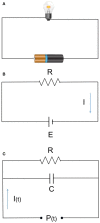Improving Perioperative Outcomes Through Minimally Invasive and Non-invasive Hemodynamic Monitoring Techniques
- PMID: 29868596
- PMCID: PMC5966660
- DOI: 10.3389/fmed.2018.00144
Improving Perioperative Outcomes Through Minimally Invasive and Non-invasive Hemodynamic Monitoring Techniques
Abstract
An increasing number of patients require precise intraoperative hemodynamic monitoring due to aging and comorbidities. To prevent undesirable outcomes from intraoperative hypotension or hypoperfusion, appropriate threshold settings are required. These setting can vary widely from patient to patient. Goal-directed therapy techniques allow for flow monitoring as the standard for perioperative fluid management. Based on the concept of personalized medicine, individual assessment and treatment are more advantageous than conventional or uniform interventions. The recent development of minimally and noninvasive monitoring devices make it possible to apply detailed control, tracking, and observation of broad patient populations, all while reducing adverse complications. In this manuscript, we review the monitoring features of each device, together with possible advantages and disadvantages of their use in optimizing patient hemodynamic management.
Keywords: blood pressure; hemodynamic; hemodynamic monitoring; monitor; non-invasive; outcomes; perioperative complications; perioperative outcomes.
Figures

References
-
- Aloisi F. Immune function of microglia. Glia (2001) 36:165–79. - PubMed
-
- Ilies C, Grudev G, Hedderich J, Renner J, Steinfath M, Bein B, et al. . Comparison of a continuous noninvasive arterial pressure device with invasive measurements in cardiovascular postsurgical intensive care patients: a prospective observational study. Eur J Anaesthesiol. (2015) 32:20–8. 10.1097/EJA.0000000000000136 - DOI - PubMed
Publication types
LinkOut - more resources
Full Text Sources
Other Literature Sources

